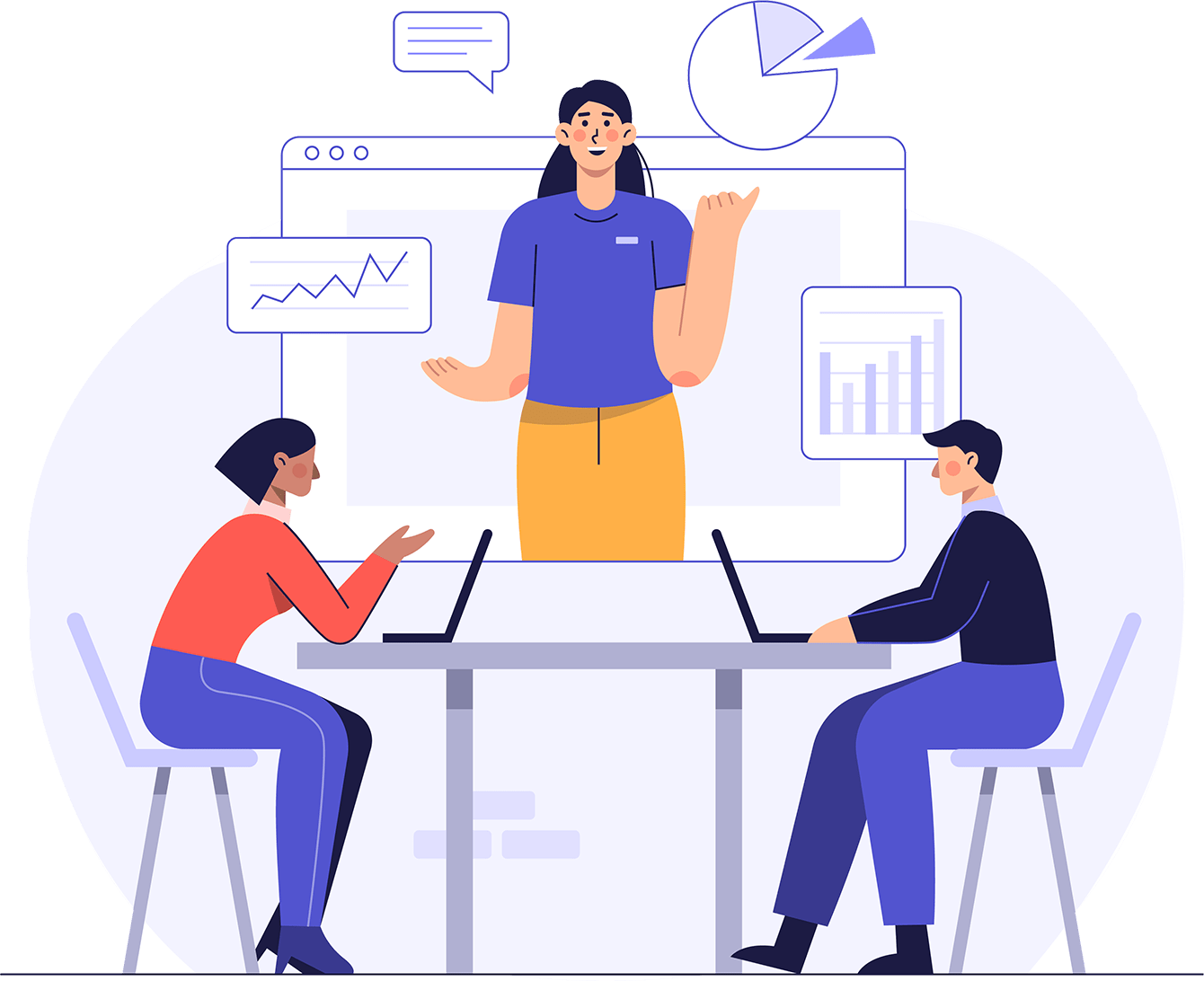“You walk into a retail store, whatever it is, and if there’s a sense of entertainment and excitement and electricity, you wanna be there.” — Howard Schultz, CEO, Starbucks.
In order to be a successful retail business owner or manager, it’s essential to understand the basics of retail management. What are the primary responsibilities of a retail manager? What skills and knowledge are necessary to be successful in this field? In this blog post, we’ll discuss four key aspects of retail management that every business owner or manager should be aware of, including:
- Inventory management
- Staff management
- The store layout, design, and planning
- Setting sales targets
What is retail management?
The retailing of products and services to clients is referred to as retail. Generally, retailing involves the sales of small quantities of product units to large numbers of consumers by a business set up for that purpose. For example, grocery stores, hardware stores, clothing stores, e-commerce retail, etc.
Retail management involves executing all the processes and procedures required to attract customers into the store and fulfill their shopping desires. In addition, retail store managers make shopping a positive and memorable experience that ensures customers leave satisfied. In sum, retail management is about supporting customers through their shopping journey.
Retail Management Process: Four Main Responsibilities
Retail Inventory Management
Retail Inventory management helps retail managers identify which and how much stock to order at what time. Inventory management tracks inventory from purchase to the sale of goods. The practice identifies and responds to retail industry trends to ensure there’s always enough stock to fulfill customer orders and proper warning of a shortage.
The right product: our suppliers must deliver products with the that customers want in ideal qualities to meet customer demand.
Right quantity: Maintaining accurate inventories conserves money, minimizes waste, and improves productivity.
Right condition: pay particular attention to transportation and storage, especially with delicate organic items or limited shelf life products.
Right place: In order to achieve maximum efficiency, the product must be in the right place at the right time.
Right time: retail management must ensure items are just in time (JIT) in the area they should be since time is a valuable resource that must not be wasted.
Right Customer: All our efforts are in vain if we are not aiming for the right goal. It is vital that our business model targets the “ideal” customer segment and organize our people, process, and resources to put our products in the hands of those who need them, where and when they are required.
Right Price: The most important thing is that the product is delivered as efficiently as possible. We must find solutions that provide lower costs while still maintaining the quality and optimal conditions of the goods.
Note: Inventory management is linked to the supply chain and thus connected to all retail management systems.
Retail Staff management
Retail staff management is the recruitment, training, and supervision of all staff and operations within a store. This includes working closely with employees, creating shift schedules, communicating with suppliers, and dealing with customer complaints.
Retail Recruitment Process:
- Requisition: get permission to start the recruitment process; put out job advertisements.
- screening the applicants
- interviewing qualified candidates,
- selecting for the best fit,
- rank candidates and make job offerings
Orientation, Training, Onboarding:
- Ensure employees are knowledgeable about business processes, procedures, health and safety policies, products, and services (employees: cashiers, assistant store managers, sales representatives, customer service representatives, etc.)
Retail Staff Supervision (aka, Store Manager)
- Supervise, schedule, support, motivate and coordinate with staff
- Authorize various payments and the return of merchandise.
- Administer store policy, procedure, and payroll
- Manage customer problems, issues, and complaints
TimeWellscheduled.com can help Prepare Work Schedules.
- Eliminate Conflicts: Make your schedule run smoother by viewing each employee’s availability and preferences as you build the schedule.
- Save time: Quickly see who is working. The dashboard gives you a snapshot of what is happening with your schedule in real-time.
- Chaos-Free Shift Changes: You can easily customize the schedule view to make the information you need easy to locate
- Repeat Your Success: When you need to fill an open shift fast, send out a shift alert to all qualified and available staff via email and text.
The Retail Store Layout, Design, and Planning
A retail store layout is the strategic use of space to influence the customer experience. Retail Stores are usually designed with new merchandise at the front to entice shoppers into the store. The front of the store also creates a sense of the store’s identity by showcasing house brands; for example, having a centrally located checkout counter stocked with accessories encourages impulse purchases.
Retail Planograms
The largest U.S. retail chains, including Walmart, Costco, and Target, use planograms in merchandising to create consistency between retail store locations and improve visual appeal and product pairing. As a result, a planogram is a critical retail tool used to plan and manage product location, facings, and allotment within a retail store.
In brief, planograms are detailed schematics of store layouts and displays that drive sales, increase brand awareness, and optimize space. These diagrams or models indicate the merchandise placement on shelves and the format for the entire store. Planograms optimize product placement and ensure every store area has a purpose. Also, view: What is and how to create a Planogram for your business?
Note: retail store layout, sales floor, product placement, and general retail environment are based on market research and executed by retail managers.
Retail Customer Flow
Customer flow effectively directs and influences the customers’ movement through the shopping experience. Customer flow optimization involves removing barriers, such as line-ups at the checkout counter, that make in-store shopping seem tedious.
Retailers must also develop eye-catching product presentations and ensure that in-store traffic is optimal. Product displays that entice customers into the store and correct signage help shoppers avoid feeling lost or overwhelmed. To improve customer flow, retailers must optimize their visitor management by identifying what consumers are most interested in and placing them accordingly.
Setting & Reaching Sales Targets
Sales targets are set objectives for your retail sales team. These goals center on specific Key Performance Indicators (KPI) and are often tied to overall business objectives. Typical sales goal examples include increasing revenue by 30% year over year or boosting customer retention by 15% in 2022.
Setting retail sales targets can have a significant impact on business outcomes. Sales targets can affect cash flow, employee motivation, and sales management. Without a clear strategy for achieving sales targets in retail outlets, retail managers and staff lose direction and motivation. “You’ll most likely never get there if you don’t know where you’re going” -Lewis Carroll.
SMART sales goals are objectives defined by sales managers and to guide sales staff (and departments). Following the SMART acronym, these goals use five criteria, Specific, Measurable, Achievable, Realistic, and Time-Based, to create a clear target for employees to work toward. (Wikipedia)
Retail management is about just keeping the store stocked and ensuring all the employees are doing their job. It’s also about creating a positive experience for customers that leaves them coming back for more. From inventory management to staff training, from layout and design to sales targets, retail managers have their hands.
Conclusion
Thank you for reading our article!
TimeWellScheduled.com is a secure, online time and attendance software that is 100% tailored to meet your scheduling needs! In addition, TimeWellScheduled facilitates employee attendance and payroll tasks, enhancing your staff management capabilities. Features include everything from staffing and employee scheduling to the time clock and payroll management. Plus, our service is free for up to 10 employees!
Click: here to download our (Excel) employee scheduling template; It’s FREE!





